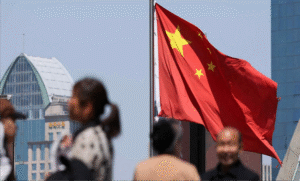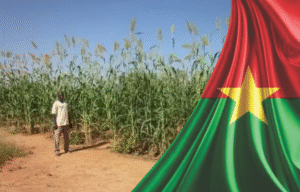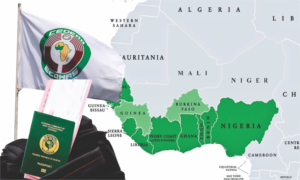Burkina Faso upgrades defence with delivery of Chinese-made armoured vehicles, artillery systems
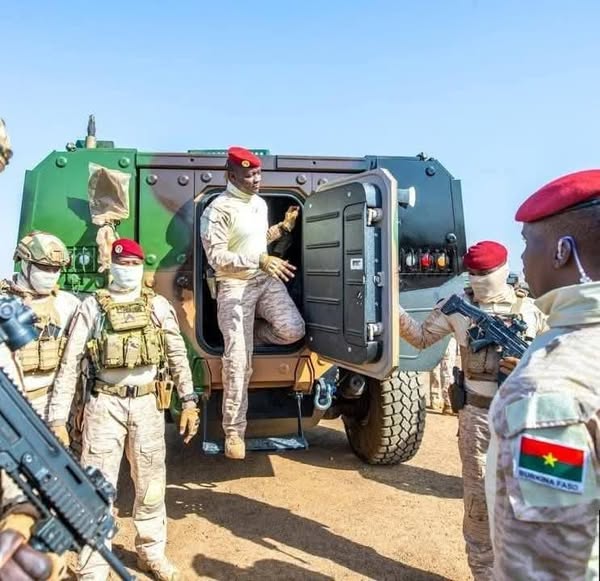
Burkina Faso has taken delivery of a fresh tranche of Chinese-made armoured vehicles and artillery systems, a move that deepens Ouagadougou’s pivot toward Beijing’s defence industry and accelerates its drive to rapidly reconstitute combat power for internal security and cross-border operations with Sahel allies. Reports and imagery published in early August 2025 indicate the shipment includes VN22B wheeled fire-support vehicles, PLL-05 120 mm self-propelled gun-mortars, and SR5 multiple-rocket launchers (MRLs).
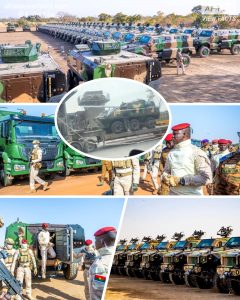
What arrived and why it matters: VN22B 6×6 fire-support vehicles is a modern, mine-resistant wheeled platform designed for high-mobility fire support. Its V-shaped hull and modular armour emphasize survivability against IEDs and small arms, while its remote weapon station enables accurate, on-the-move engagements. Deployed in mixed columns with troop carriers and logistics trucks, VN22B units can escort convoys, reinforce checkpoints, and spearhead quick-reaction operations in Burkina Faso’s road-bound northern and eastern theatres.
PLL-05 120 mm gun-mortars. Mounted on an 8×8 chassis, the PLL-05 combines mortar-like indirect fire with direct-fire gun capability. This duality lets Burkinabè units deliver swift suppressive fires on insurgent positions while retaining the option to engage line-of-sight targets, reducing the time and coordination traditionally needed to call in separate artillery. For a force fighting dispersed, agile adversaries, this platform tightens the sensor-to-shooter loop at battalion and brigade level.
SR5 modular MRLs. The SR5 provides a step-change in range and volume of fires. Its modular pods can fire different rocket calibres (e.g., 122 mm or 220 mm family munitions depending on pod type), letting commanders tailor load-outs for area suppression, counter-ambush, or interdiction. The system’s mobility and shoot-and-scoot tactics complicate enemy targeting and add a deep-strike option Burkina Faso previously lacked.
Part of a broader buildup since 2024–2025: The August delivery follows multiple batches of Chinese equipment over the past year. In late 2024 and January 2025, Ouagadougou received over 100 armoured vehicles—notably CS/VP14 MRAPs, VN22 6×6s, and CS/VN9 APCs—plus dozens of Shacman logistics trucks and tractors. Those shipments significantly expanded troop mobility and protected transport for long-range patrols and resupply.

Operational impact in the Sahel
- Mobility & protection: The mix of MRAPs and wheeled fire-support vehicles equips units to move rapidly on contested roads while withstanding IED threats—a persistent driver of casualties in the Sahel. The VN22B’s protection complements the earlier CS/VP14 MRAP fleet, enabling better-armoured convoy frameworks.
- Organic firepower: PLL-05 batteries add responsive, battalion-level fires for clearing ambush sites, supporting raids, and defending forward bases. The ability to swing between indirect and direct fire reduces dependence on scarce tube artillery or air support.
- Deep-area effects: SR5 launchers give commanders a tool to disrupt staging areas or supply nodes beyond conventional mortar range, improving deterrence and shaping operations along porous borders.
These gains dovetail with the Alliance of Sahel States (AES) plan—Burkina Faso, Mali, and Niger—to field a 5,000-strong joint force with its own air, ISR, and logistics enablers. Longer-range artillery and better-protected mobility platforms enhance the AES’s ability to conduct coordinated, cross-border operations.
Analysts highlight cost competitiveness, fast delivery, and flexible financing as core reasons African buyers increasingly select Chinese systems. For a country fighting an entrenched insurgency, the ability to field usable capability quickly can outweigh the allure of more sophisticated but slower or costlier Western options. The latest Burkina Faso order reflects those practical considerations, as well as Beijing’s growing footprint in West Africa’s defence markets.
Burkina Faso’s shift aligns with a broader realignment among Sahel juntas toward non-Western suppliers. In parallel with Chinese deliveries, the AES bloc has also cultivated ties with Russia for training and equipment, seeking to diversify sources and reduce reliance on Paris and Washington. This re-balancing is visible in recent pledges of Russian support to the AES joint force and in reported materiel flows to neighbouring Mali.
Risks and constraints
- Sustainment & training: Introducing multiple new platforms stresses logistics chains (spares, tools, test equipment) and training pipelines for crews and maintainers. Success will hinge on consistent parts supply, local technical training, and depot-level maintenance capacity. (This concern is a general sustainment principle; the specific platforms cited above mark a notable increase in fleet diversity.)
- Civilian harm & rules of engagement: As firepower grows—especially with SR5 MRLs—tight fire-control measures and ISR-targeting discipline are critical to minimize collateral damage in populated zones.
- Counter-battery and air threats: Insurgents’ adoption of larger IEDs, loitering munitions, or indirect-fire harassment could raise survivability challenges, requiring counter-UAS kits and better counter-battery sensors over time.
With the VN22B, PLL-05, and SR5 now joining a growing fleet of CS/VP14 MRAPs, VN22s, CS/VN9 APCs, and Chinese logistics trucks, Burkina Faso is rapidly upgrading its ability to move, survive, and strike in a high-IED, long-distance fight. The acquisitions underscore a pragmatic turn to Chinese suppliers for fast, scalable capability—one that will shape the AES joint force’s posture in 2025 and beyond.


